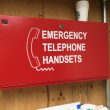Congress needs to offer a bigger carrot, if it wants a potential 911-funding stick to have any meaning
If Eshoo talking about cutting off all federal funding to a state that diverts 911 fees—or even a big chunk, such as highway funding—then that certainly would get the attention of state officials and the practice of diverting 911 fees would stop immediately. But it also would likely stir up a political hornets’ nest that I don’t believe any federal lawmaker wants to be near.
If Eshoo was talking about cutting off federal funds for 911, that sounds perfectly reasonable in theory—it’s the traditional carrot-and-stick approach that has proven effective many times throughout history. But the strategy has one practical flaw: the federal government really does not provide much federal funding for 911. Threatening to take something away that doesn’t exist is not an effective incentive to alter behavior.
That was supposed to change in December 2004, when Congress passed legislation authorizing $1.25 billion over five years to pay for E-911 initiatives. But that episode ended with public safety learning the harsh lesson that there’s a big difference between authorizations and appropriations—no regular appropriation was ever made, and only a paltry $43 million in funding was realized from this legislation.
At the moment, it is difficult to envision an effective funding model for NG911 that can provide a similar level of service throughout the nation without some sort of participation from the federal government. Without the federal government, we likely will end up with some PSAPs having the latest-and-greatest NG911 technology, while others struggle to maintain even basic 911 offerings.
Exactly what the federal government’s long-term role in 911 should be is something that needs to be determined soon, particularly if the goal of migrating to NG911 by 2020 hopes to have any chance of becoming a reality. It may not be a conversation for today—politicians are focused on the upcoming elections, and 911 efforts don’t tend to win many votes—but lawmakers at all levels of government should have some frank discussions beginning early next year in an effort to uncover the best way to deliver the kind of 911 service that citizens expect.
This timing is especially appropriate given the projected timing of the FirstNet system that is designed to deliver next-generation media and applications to first responders in the field, because FirstNet and NG911 deployments clearly are complementary initiatives.
With NG911, citizens will be able to send pictures, video and other enhanced media to PSAPs, but the benefits from this are very limited, if PSAP personnel can only verbally describe this multimedia to first responders dependent on LMR communications. Meanwhile, FirstNet connectivity will be very helpful in the field, but its value would be limited if public safety can only view media from other public-safety entities, as opposed to being able to access multimedia from citizens via 911.
In other words, it is vital that both FirstNet and NG911 are deployed together, if the future vision of modern public-safety communications is going to be realized. Congress took a giant step to ensure that the FirstNet side gets built; now, it’s time to consider a similar initiative on the NG911 side of the equation.










